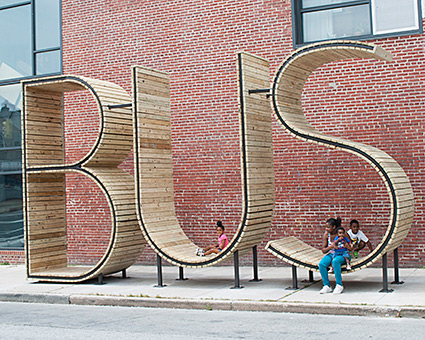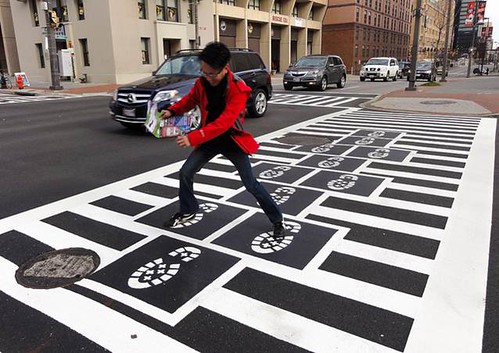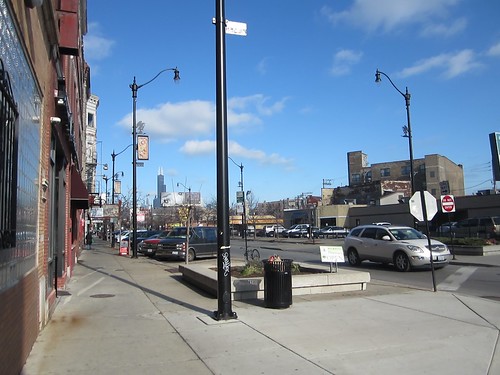
Active, creative, and social play has a number of benefits for children, especially those in low-income, urban communities. However, nowadays many kids don’t get enough opportunities for healthy play, according to staffer Janine Kacprzak from the nonprofit KaBOOM. The organization has helped build over 2,500 playgrounds across the country, including hundreds in Chicago, Kacprzak said.
KaBOOM recently shifted its focus from simply building playgrounds to encouraging cities to provide “corner stores of play” -- opportunities for children to recreate close to home. At the Playful City USA Summit in Chicago last month, leaders from around the country took a tour of the Pilsen neighborhood, brainstorming play-friendly placemaking ideas that could work in any community.
One of the main reasons why many kids don’t engage in healthy play as often as they should is the issue of proximity, Kacprzak said. A park or playground can feel far away because a family has to drive or take transit to access it, or walk to a different part of the neighborhood.
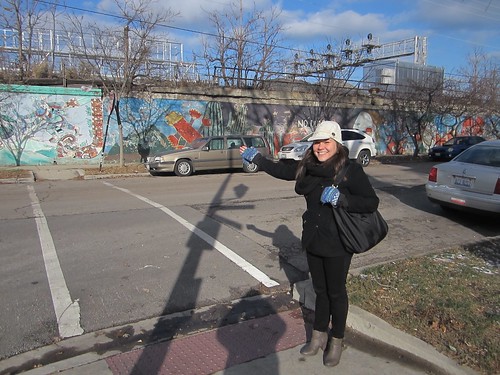
Unsafe or unpleasant conditions for walking or biking, including poor street design, crumbling infrastructure, or concerns about crime, exacerbate the problem. As a result, the majority of low-income families KaBOOM surveyed tend to take their kids out to play on weekends, sometimes for several hours at a time.
If this kind of play is the equivalent of a weekly trip to the supermarket, the nonprofit proposes creating “corner stores of play" through placemaking – activating underused public spaces. “The idea is to make smaller play areas throughout the city, so it’s not this huge hassle of getting kids ready for an outing, but something nearby,” Kacprzak said. She added that cities who use this approach in all kinds of neighborhoods, and prioritize investing in parks and play in general, benefit economically by attracting and retaining families and businesses.
212 municipalities of all sizes are participating in KaBOOM’s Playful City USA program by using play as a strategy to address challenges in their communities. Representatives of 12 of the cities convened at Blue 1647, a tech incubator space at 1647 South Blue Island in Pilsen, for the summit.
The leaders discussed way to create opportunities for “play everywhere,” Kacprzak said. They talked about ciclovias, Latin American-style events where a network of streets is opened for healthy recreation, and Play Streets, block parties that provide safe spaces for play.
At a Baltimore bus stop, for example, an artist built a giant sculpture of the word “Bus,” which adults can rest on and children can play in. Street games like hopscotch can be painted on wide sidewalks, or even in crosswalks. They even proposed creating kid-friendly subway cars with games and other diversions.
The purpose of the Pilsen tour was to draw inspiration from the neighborhood's assets, including its architecture and public art, as well as looking at areas that could be improved by placemaking, Kacprzak said. “We wanted people to see a community that’s growing, thriving, and building itself up.” About 30 people from the public sector, businesses, and social service organizations came along.
Kacprzak recreated the tour with me yesterday. First, we stopped at a rather drab, triangular plaza on the north side of the 18th/Loomis/Blue Island intersection. "All it has is an ad bench," she said, comparing it to relatively vibrant Tenochtitlan Plaza directly south, which features an eagle-topped pillar. She suggested activating the space with more seating and a free book exchange box, or possibly adding guardrails and installing playground equipment.
On the 18th Street business district, Kacprzak noted that wide sidewalks – suitable for painting street games -- and brick crosswalks enhance pedestrian safety. Meanwhile, an interesting architectural mix, shop windows at kid’s-eye level, and plenty of colorful murals make 18th a pleasant place to walk. However, she noted that a number of parking lots along the strip detract from the visuals. “Do we really need this many, or could something else be done with the space?”
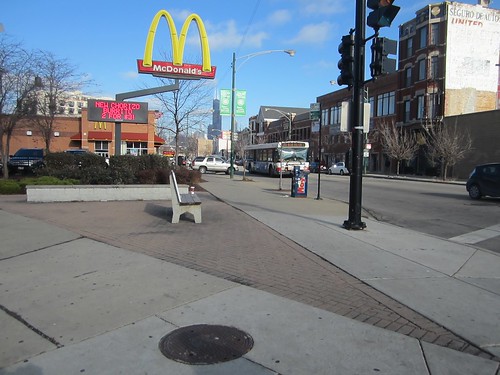
Heading south on Laflin, Kacprzak pointed out that a street closure for a construction project has inadvertently created a safe place for play. She also noted an alley that could potentially be turned into a temporary space for games.
At Laflin and 19th, Kacprzak pointed out an attractive, fenced-off lot. “It’s a great patch of green but there’s nothing happening with it.” She wondered if it might be possible to use the land for a playground or a community garden until it is developed.
At 19th and Blue Island, Kacprzak noted that the west side of Blue Island is relatively pedestrian friendly, with interesting storefronts and a wide sidewalk, but the east side is flanked by parking lots and iron fences. The city installed a simple, square planter on the wide sidewalk. “You can tell they were trying to reclaim this space and make it beautiful,” she said, adding that the corner could be enlivened by adding a play structure with piano keys, which kids could step on to make music.
Elsewhere on the walk, Kacprzak pointed out fenced-in school playgrounds with signs forbidding late-night use, but no mention of the fact that the green space was available to the public. She noted empty lots between houses that were full of garbage, but could be brought to life with more positive uses.
Faded murals along a railroad embankment on 16th Street might be refurbished to enliven the corridor, Kacprzak said. Bus stops on 18th currently only have ugly ad benches, but perhaps some of the stops could get interactive sculptures to make waiting for a ride more fun. “That’s part of what the 'play everywhere' concept is about,” she said. “Transforming moments of frustration into moments of joy.”
Streetsblog will resume publication on Monday. Have a great Thanksgiving!
